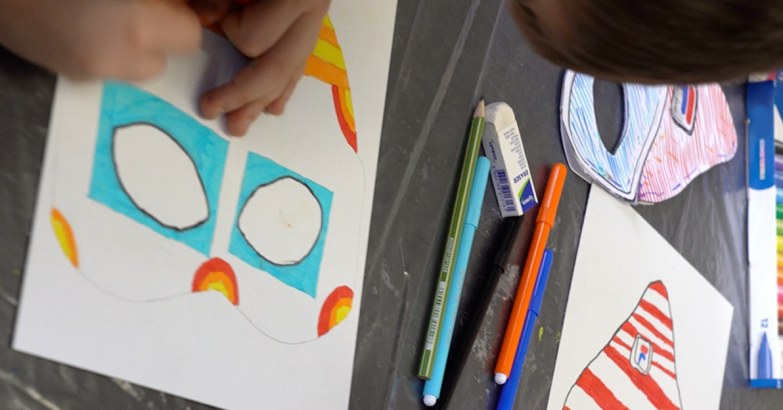LET THE FUN BEGIN! A BRIEF HISTORY OF CARNIVAL
A year ago, on the occasion of our museum workshop, Su la maschera! (‘Masks Up!’), Carnival became the star of our Blog. However, we forgot to write about the long history of this tradition: let’s do it today!
The word ‘carnival’ is of Christian origin: it comes from the Latin expression carne levare, which means ‘remove meat’ and refers to the banquet once organized in the pre-Easter period. The etymology of the word Carnival thus points to a Christian celebration.
However, the event itself seems to have pagan origins. The Roman Saturnalia (celebrations devoted to Saturn) said goodbye to winter and welcomed spring’s agrarian fertility. People organised dances, choirs and parties between all social classes to please the gods. The use of masks and disguises eliminated visual distinctions between rich and poor so that anybody could aspire to be elected as ‘Rex Saturnaliorum’, or the King of this seasonal transition.
The Mediaeval era was also marked by similar celebrations – people used to ritually burn a puppet at the beginning of every year for example – at least before the Reformation decreed fasting and atonement.
Despite the moralistic overtones, Carnival emerged as a social and festive event, especially during the Renaissance. In Florence, Italy, during the Medici period of the 15th and 16th centuries, opulent carnival floats were organised and accompanied by musical performances devoted to lust and pleasure. In Venice, the very first document about a local, public carnival dates from 1296 and even then encouraged participants to disguise their identity. Over the years La Serenissima has become a beloved festival, with displays of ships, fictional characters (such as ‘Colombina’, a talkative servant) and special carnival cakes.
But even if Italian carnival traditions charm tourists from all over the world, perhaps they do not compare to the carnival in Rio de Janeiro. From the 20th century onwards, it has become the largest in the world.
In the past, African slaves sent from Portugal to Brazil danced samba to alleviate their misery. After the abolition of slavery, many moved to Praça Onze and Cidade Nova regions in the south of the country and began to work as performers, composers and musicians. They challenged each other with dance competitions, and in 1932 this became the first urban carnival; a week-long party that attracted thousands of onlookers. From 1984 the event has been hosted in a huge concrete building designed by Oscar Niemeyer.
We don’t know if the FILA Foudation Museum’s upcoming carnival is going to be as big as the one in Rio, but we can assure you that we’re looking forward to entertaining our youngest visitors with music, creative workshops and yummy surprises.
Follow our social media channels to discover more!
Back to the articles!Leave a Reply


